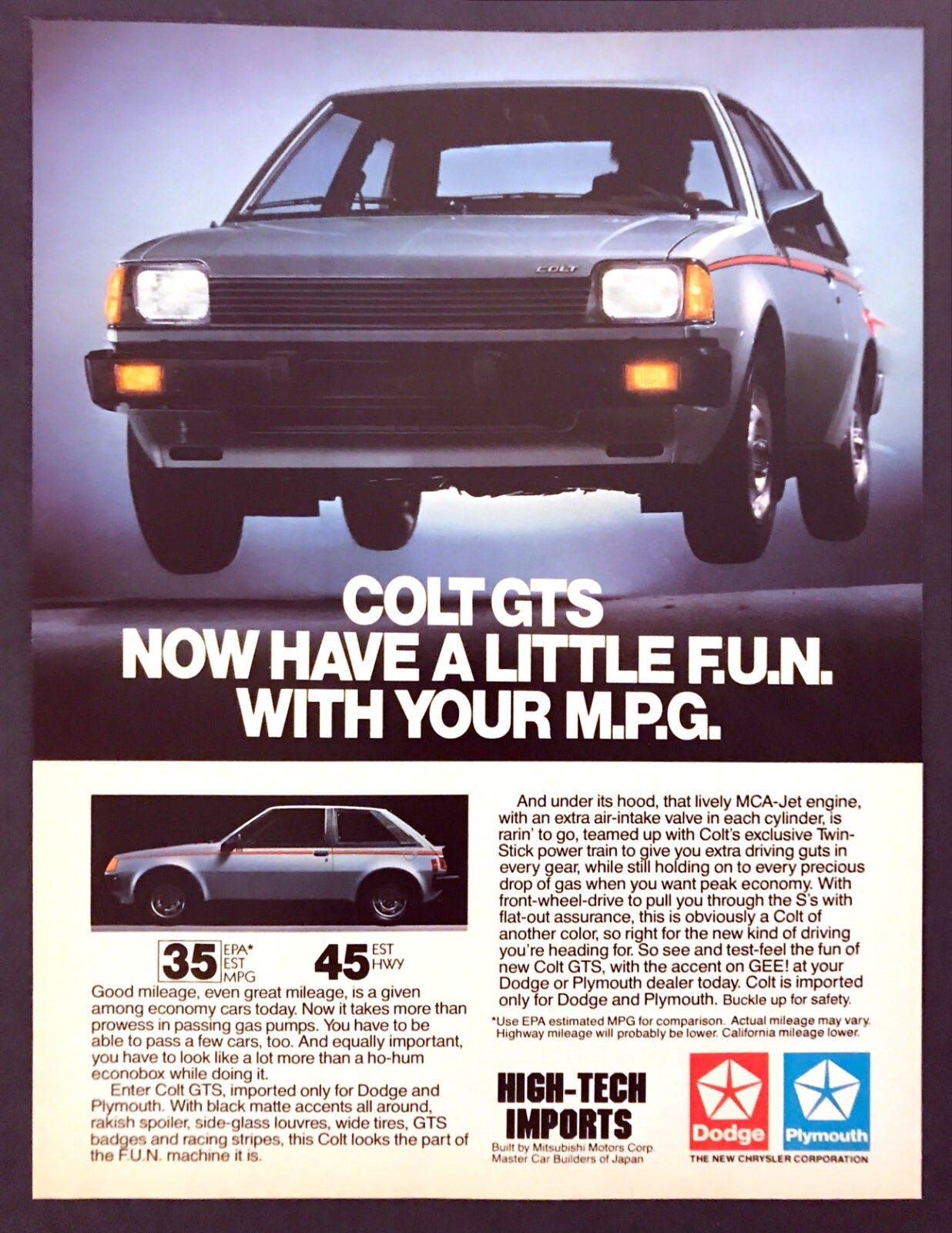A Different Kind Of Colt
Americans know Colt primarily as the gunmaker that for some reason doesn’t have a working website as I write this. I don’t care enough to dive further into this issue because this is still a car blog, not a testament to Charlie Kirk’s values.
Thus, the Colt I’m interested in peaked just before the turn of the millennium. This came to the U.S. in various forms although the source stems from just one brand.
[Author’s Note: Welcome back to Hold Fast, a series that breaks down contemporary cars that are often overlooked. That just because it’s brilliant doesn’t mean buyers, politics, or the economy agree. Each vehicle coming through here gets their own redemption arc.]
Mitsubishi is a manufacturer that currently licenses cars from other companies. But it used to be the opposite. Mitsubishi-based vehicles were a way for the brand to break into the U.S. in that vital 1980s period when repercussions from multiple oil crises were still at its peak. Fuel economy and compact size were in demand and domestic carmakers had to respond quickly.
So Chrysler Corporation turned to Mitsubishi to establish a line of smaller-than-life cars that met the needs of consumers at the time—to mixed success. It was a little weird to see a Dodge Challenger that looked like a washing machine. Or a Dodge Ram that was smaller than the typical pickup truck. But the greatest success, and perhaps the most underrated, was the Colt.
There’s a lot of notoriety with the Colt, particularly the GTS Turbo that was only made for one year. That’s the one in this clip. As you can see, Chrysler was in the habit of attaching multiple nameplates, before the car adopted a slightly tweaked calling for the following year. But that Colt is different from this 1984 example, and it’s something of a legend. Like Bigfoot.
For one, sightings of these are rare, not just the performance-leaned GTS Turbo. One such owner is going to extreme lengths to keep theirs as exhibited by this dead-looking thing exploited to the internet earlier this year.
It has no reason to look this exciting. This was precisely a one-ton car that exemplified fun before the Miata came into the picture. A three-door hatch came in at just 156.9 inches long and had a wheelbase with just 90.6 inches, similar numbers to the two-seat roadster. But this had four seats.
It also featured an odd second shifter. This sat next to the manual gear lever like in a Jeep. Instead of locking four-wheel drive however, this acted more of high-range/low-range function.
In theory, you could maximize fuel economy until you need more power from the turbo boost, thus flicking the lever forward. But with such a lightweight compact design, acceleration ranged from jumpy to more jumpy. As a review from this century revealed:
It’s a shame about its rarity because this doesn’t seem like a compromise. Like I will argue about my Miata, it feels like a complete automobile in spite of its small footprint. For the price and pint-size capabilities, this is exactly the kind of transportation Americans want in today’s inflated economy.
Speaking to its reputation for being criminally underrated, it was difficult to mine the internet for reviews of this car. I did however come across a comparison test for a later generation of the Colt, which won out versus ten other sporty compacts. By then, the Plymouth name was dropped.
Car and Driver wrote:
In almost any category you can name—build quality, handling, comfort, value—the Mitsubishi-made Colt GT scores at or near the top of this heap. Although the Colt trails much of the group in straight-line performance, its engine revs willingly and seamlessly, and its shifter stirs smoothly. And the Colt’s decisively superior slalom prowess, excellent braking, and respectable skidpad grip translate into the sort of responsive, fluid handling that serious drivers appreciate. Try it once through a series of challenging corners and you’ll be convinced.
It’s a shame about its rarity. Like the other Colt, this one didn’t sell too well so finding one is difficult. In all, there were seven generations of Colts between 1971 and 1995, adopting Dodge, Plymouth, Mitsubishi, and even short-lived Eagle nameplates.
This was the strangest time to have with Mitsubishi. In addition to a truck and faux muscle car, we even got a turbocharged sports car in the Chrysler/Dodge/Plymouth Conquest, which was a rebadged Mitsubishi Starion.
All of these imported domestics and yet, all incredibly difficult to find. None sold in quite the volume as Honda or Toyota back then. Suddenly, the Colt cult is more appreciative because of the mishmashed handling of business that brought two conglomerates together from opposing countries. Pity the American public didn’t embrace it as well.
The Colt is a symbol of that failed venture. All of which makes things like this pandemic project cheering for. And that makes it a worthy addition to the Hold Fast arsenal.
-TA





